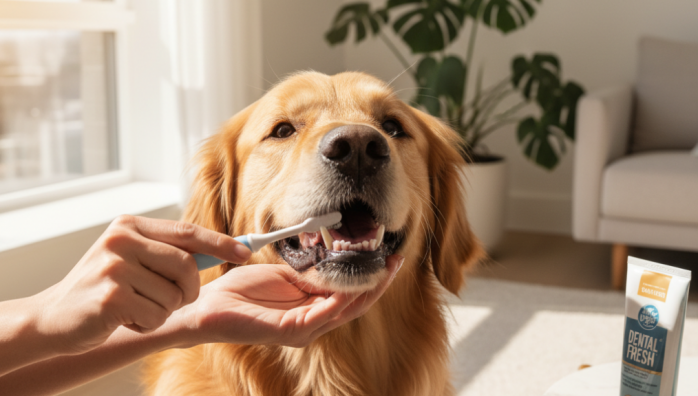Brushing Your Dog's Teeth Daily
by admin in Pet Care Basics 16 - Last Update November 21, 2025

I\'ll be honest, when my vet first suggested brushing my dog\'s teeth daily, I thought it was a bit much. I was already giving him dental chews and thought that was enough. The idea of adding another chore to our already packed routine felt overwhelming. But after a particularly costly dental cleaning for my older dog, I decided to give it a serious try, and what I discovered completely changed my perspective on canine oral health.
Why I started brushing daily, and what changed
The real turning point for me was seeing the tartar build-up on my dog\'s back molars, despite the daily \'dental\' treats. His breath was also becoming noticeably unpleasant. My vet explained that while chews can help, nothing replaces the mechanical action of a brush removing plaque before it hardens into tartar. It\'s the same reason we can\'t just rely on mouthwash.
So, I committed to a 30-day trial. The first week was clumsy, for both of us. But by week three, it was a normal, quick part of our evening routine. The most shocking change? His breath. That foul \'doggy breath\' almost completely vanished. His gums looked healthier and pinker, and I felt an immense sense of relief knowing I was actively preventing painful dental disease down the line.
My simple daily brushing routine
Getting into the groove was all about making it simple and positive. It\'s not a wrestling match; it\'s just a few minutes of quiet care before bed.
Choosing the right tools
This was my first hurdle. I learned quickly that human toothpaste is a huge no-no; it contains ingredients like xylitol and fluoride which are toxic to dogs. I opted for an enzymatic toothpaste for dogs, which has a poultry flavor he seems to love. For the brush, I started with a soft-bristled finger brush to get him used to the sensation, then graduated to a long-handled, angled dog toothbrush to better reach the back teeth.
Making it a positive experience
I attached the new habit to an existing one. Every night, after our final potty break, we sit in the same quiet spot. I started by just letting him lick the toothpaste off my finger. Then, I\'d gently rub the paste on his gums with my finger. Only after he was comfortable with that did I introduce the brush. Every session ends with lots of praise and a favorite cuddle. He now sees it as a special time for us, not a scary procedure.
Is it really worth the effort?
For me, the answer is a resounding yes. It\'s two minutes out of my day that saves my dog potential pain and saves me from massive vet bills for extractions and cleanings under anesthesia. It\'s a small act of preventative care that has a massive impact on his overall wellness and comfort. Of course, this is just what worked for my dog, but I always recommend chatting with your vet first to come up with the best dental plan for your companion.













